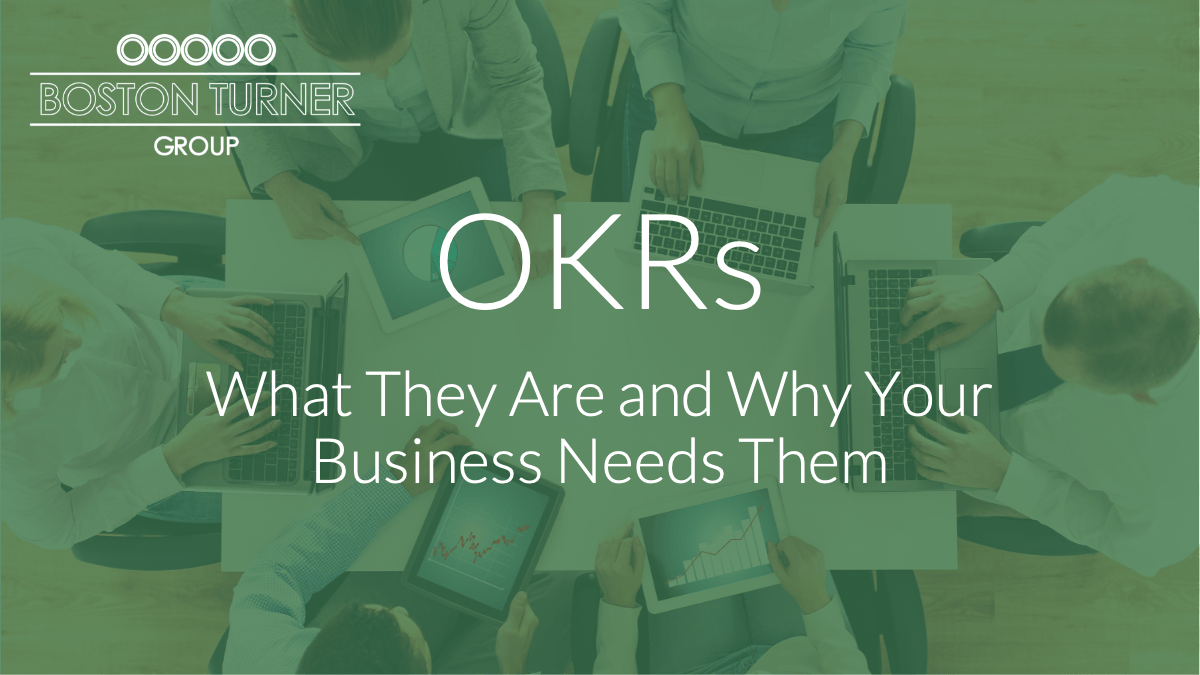Family businesses are great. You get to do what you love surrounded by the people…

OKRs: What They Are and Why Your Business Needs Them
If you’re like most business owners, you’re always looking for ways to improve your company’s performance. You may have heard of OKRs and are wondering what they are and whether your business needs them. OKRs stand for Objectives and Key Results and can help you improve your business in several ways. In this blog post, we will discuss what OKRs are, how they can benefit your business, and some tips on setting them up correctly.
What are OKRs?
OKRs are a simple-to-institute performance management system that help you set and managed focus goals. The system is designed to help you set and track progress towards specific objectives, and it can be used in businesses of all sizes. OKRs can be used to improve individual performance, team performance, or overall company performance.
Setting objectives and key results can help you track progress and identify areas of improvement for your business. Objectives are specific goals that you want to achieve, while key results are the metrics by which you will measure progress towards those objectives. For example, let’s say your objective is to increase sales by 10% this quarter. Your key result could be the number of new sales generated during that time period.
Why use OKRs?
There are many reasons why you would want to implement OKRs in your business. First, they can help improve clarity and alignment within your company. Everyone from the CEO down to entry-level employees should know what the company’s objectives are and what they need to do in order to help achieve them. This can help create a more focused and cohesive team that is working towards the same goals.
Second, OKRs can improve accountability and transparency within your business. When everyone knows what the objectives are and how their work contributes to them, they are more likely to be held accountable for their results. Additionally, tracking progress using key results can help you identify areas of improvement and take corrective action if necessary.
Finally, setting OKRs can help you motivate and engage your employees. When people feel like their work is meaningful and that they are contributing to something larger than themselves, they are more likely to be engaged and motivated. This can lead to improved performance and satisfaction in the workplace.
Tips for setting up OKRs
Now that we’ve discussed what OKRs are and why you should use them, let’s talk about how to set them up correctly. Here are a few tips:
- Start with the big picture. What are your overall objectives for the company? Once you have a good understanding of these, you can start setting objectives and key results at the departmental or individual level.
- Make sure your objectives are specific, measurable, achievable, relevant, and time-bound (SMART). This will help ensure that they are realistic and that you can track progress towards them effectively.
- involve employees in the process. Ask for input on what objectives and key results would be most important to them and their department. This will help ensure buy-in and ownership of the process.
- Set a timeframe for each objective and key result. This will help you track progress and identify when objectives have been met or if further action is necessary.
- Communicate, communicate, communicate. Make sure everyone in the company understands the objectives and key results and knows how their work contributes to them. Additionally, keep employees updated on progress towards objectives on a regular basis.
OKRs can be an extremely valuable tool for businesses of all sizes. If you’re looking to improve clarity, alignment, accountability, transparency, or employee engagement in your company, setting OKRs is a great place to start.
Do you need help establishing the ideals and measurements that keep your company on track? Please contact us for a free consultation.



